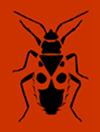The effect of temperature and photoperiod on the time taken for a meal to pass through the gut, defecation and digestion in the last larval instar of Spodoptera littoralis (Lepidoptera: Noctuidae)
IF 1.2
3区 农林科学
Q2 Agricultural and Biological Sciences
引用次数: 0
Abstract
. Spodoptera littoralis (Boisduval) is a highly destructive and polyphagous insect pest of great economic importance. It develops throughout the year and the larvae are non-diapausing. Little work has been done on the time taken for food to pass through the gut of S. littoralis . Thus, this study on starving and well fed last instar larvae of S. littoralis aimed to determine the effect of temperature and photoperiod on the time taken for a meal to pass through the gut, defecation and digestion. The results indicate that it depended on temperature, photoperiod and hunger. The time that elapsed between a larva being fed and the production of the fi rst faecal pellet, which is a measure of the time it takes for food pass to pass through the gut (SFP), differed signi fi cantly at different temperatures and photoperiods. The SFP was longer at 15°C than at 30°C. At 20°C and under a short photoperiod, SFP was very much shorter than under a long photoperiod (18L : 6D). In addition, at 20°C, the time to defecation was signi fi cantly longer under a photoperiod of 12L : 12D than under continuous light. In all the tests > 95% of the larvae produced four faecal pellets per meal. The digestibility values varied signi fi cantly in the different tests. This study offers new insights into the passage of food from the crop to the rectum at different temperatures and photoperiods. This might help in understanding the adaptability of S. littoralis and may also help in controlling this important pest.温度和光周期对草地贪夜蛾(鳞翅目:夜蛾科)最后一龄幼虫一顿饭通过肠道、排便和消化时间的影响
草地贪夜蛾是一种具有高度破坏性和多食性的害虫,具有重要的经济意义。它全年发育,幼虫不滞育。关于食物通过S.littoralis肠道所需的时间,人们几乎没有做什么研究。因此,本研究旨在确定温度和光周期对一顿饭通过肠道、排便和消化所需时间的影响。结果表明,它与温度、光周期和饥饿有关。在不同的温度和光周期下,幼虫被喂养到第一个粪便颗粒产生之间的时间差异很大,这是衡量食物通过肠道(SFP)所需时间的指标。SFP在15°C时比在30°C时更长。在20°C和短光周期下,SFP比长光周期下短得多(18L:6D)。此外,在20°C下,在12L:12D的光周期下排便的时间明显长于连续光照下。在所有测试中,95%以上的幼虫每餐产生四个粪便颗粒。不同试验的消化率差异很大。这项研究为不同温度和光周期下食物从作物进入直肠提供了新的见解。这可能有助于了解S.littoralis的适应性,也有助于控制这种重要的害虫。
本文章由计算机程序翻译,如有差异,请以英文原文为准。
求助全文
约1分钟内获得全文
求助全文
来源期刊
CiteScore
2.30
自引率
7.70%
发文量
43
审稿时长
6-12 weeks
期刊介绍:
EJE publishes original articles, reviews and points of view on all aspects of entomology. There are no restrictions on geographic region or taxon (Myriapoda, Chelicerata and terrestrial Crustacea included). Comprehensive studies and comparative/experimental approaches are preferred and the following types of manuscripts will usually be declined:
- Descriptive alpha-taxonomic studies unless the paper is markedly comprehensive/revisional taxonomically or regionally, and/or significantly improves our knowledge of comparative morphology, relationships or biogeography of the higher taxon concerned;
- Other purely or predominantly descriptive or enumerative papers [such as (ultra)structural and functional details, life tables, host records, distributional records and faunistic surveys, compiled checklists, etc.] unless they are exceptionally comprehensive or concern data or taxa of particular entomological (e.g., phylogenetic) interest;
- Papers evaluating the effect of chemicals (including pesticides, plant extracts, attractants or repellents, etc.), irradiation, pathogens, or dealing with other data of predominantly agro-economic impact without general entomological relevance.

 求助内容:
求助内容: 应助结果提醒方式:
应助结果提醒方式:


